The engine suffered structural failure, which required significant repair work and extensive effort to restore its function. Compression Testing is an important diagnostic technique used to determine the condition of an internal combustion engine (ICE). One should know how to perform compression tests while troubleshooting various power output issues or even while optimizing an engine’s performance. After reading this guide, you will be acquainted with the compression testing procedure and its goals alongside some critical techniques, methods of correct result interpretation, and answers to the questions that arise. You will learn the advanced techniques to identify any potential problems with the engine, improving its reliability, and avoiding expensive repairs down the line. Fulfilling a desire of both casual and professional mechanics or car enthusiasts, this article provides precise means to estimate the engine’s accuracy confidently and professionally.
What is a Compression Test and Why is it Important?
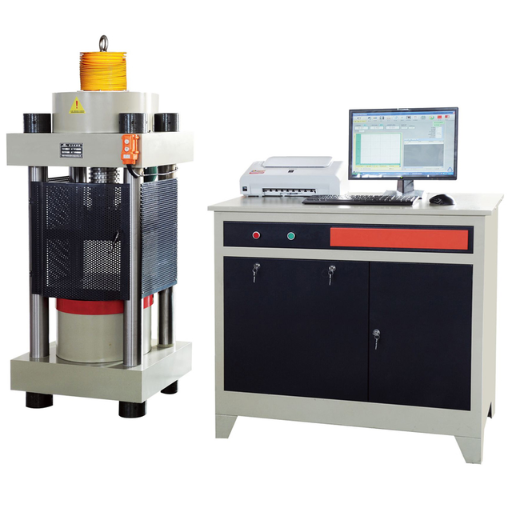
A compression test is one of the diagnostic procedures involving the assessment of internal combustion engines through measuring pressure build-up on a single compression cycle in every cylinder. It is necessary because the pressure reading after compression gives an approximate indication of how well the engine’s cylinders are sealing. Worn piston rings, defective valves, or even head gaskets may cause poor or uneven compression. Compression tests allow these problems to be identified and resolved early, thereby preventing extensive engine damage, maintaining performance, and prolonging life.
What does a compression test measure?
A compression test evaluates a gas’s maximum pressure (in either PSI or kPa) within an engine cylinder during its compression stoke. This gas pressure builds up as a gas force which helps the engine parts such as the cylinder walls, piston rings, and valves to seal properly. For modern gasoline engines, 120 to 200 PSI is common, while other engine types may vary. Low or high values of these readings indicate mechanical difficulties like piston ring wear or valve leaks. Having accurate compression data allows engineers to evaluate how efficient the engine is functioning as well as provide early detection for problems before major damage is inflicted.
How does engine compression affect performance?
Engine performance metrics such as power, fuel consumption, and the quality of combustion are all influenced by engine compression. It is known that higher compression ratios are usually associated with improved thermal efficiency as there is better combustion of the fuel-air mixture, as well as increased power. This does not come without problems, as compressors above a certain ratio run the risk of pre-ignition or knocking, especially if the fuel has a low octane rating for the given pressure. On the other hand, low compressors tend to inefficiently convert energy into work which results in poor power output and an overall increase in fuel consumption. In a compressing system, the performance, longevity, and reliability are highly dependent on the optimal level of compression. Usually, problems tend to arise in the mechanical or functional systems of the engine when compression strays from the ideal values.
When should you perform a compression test?
An engine’s compression test is an important step in diagnosing issues related to the engine performance. An engine compression test is also helpful as a proactive maintenance strategy to assess the engine’s health. It is essential that elderly vehicles or vehicles with high miles undergo compression tests regularly. Having these high mileage vehicles undergo compression tests will help avoid complications during their diagnoses. Also, compression tests apply to car auctions and buying vehicles from dealers or individual sellers, telling you if the vehicle has damaged piston rings or valves, or if the head gaskets leak. All of these reasons strengthen the argument that compression tests not only assist in determining if further inspections are needed, but also if there is a risk of incurring greater damages that would cost hefty amounts of money to fix.
How to Perform a Compression Test on an Engine?
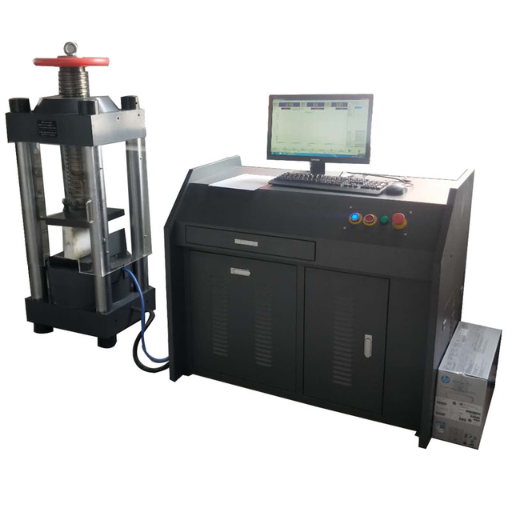
- Gather the Necessary Tools
A compression tester, a full socket set, a spark plug socket, a ratchet, a battery charger (optional), and safety gloves are all needed.
- Prepare the Engine
- Make sure the engine has reached normal operating temperature to obtain accurate results.
- Turn off the ignition system, if possible, or the fuel pump to stop the engine from starting while during the test. A common way to do this is by removing the ignition coil or fuel injection relay.
- Remove the Spark Plugs
Using a spark plug socket, take out all the spark plugs. Make sure to place them somewhere safe. This allows the engine to turn over freely during testing.
- Insert the Compression Tester
For the cylinder you are testing, place the compression tester on the spark plug hole and screw it in. Make sure it’s tight enough to avoid leaks.
- Perform the Test
- Fully depress the throttle to allow unrestricted air intake.
- For 4 to 6 revolutions while monitoring the gauge, the engine should be cranked. The reading should be noted in PSI (pounds per square inch).
- Repeat for All Cylinders
Compress the test on each cylinder separately. Consistency is important; big differences can indicate engine problems.
- Analyze the Results
Review the obtained results against the compression range specified by the manufacturer. The cylinders with high or low readings that diverge from the norm are likely to have leaks or wear.
- Reassemble the Engine
Upon completing the evaluation, disconnect the spark plugs, reconnect the fuel pump and ignition system and remove the compression tester.
With these strategies in place, performing effective diagnostics on the engine becomes achievable amplifying both repair and accuracy levels alongside overall efficiency.
What tools are needed to perform a compression test?
For accurate and reliable measurements for a compression test, some tools are needed. These tools are:
- Compression Tester – Measures the put pressure of an engine’s two strokes with a specialized gauge. Usually comes with a threaded adapter for easy placement on the sparklike plug holes.
- Spark Plug Socket and Ratchet – A tool to remove and reinstall spark plugs without damaging them. It should work on the right size spark plugs for your engine.
- Torque Wrench – Used for reinstalling the spark plugs to the correct torque so proper seal and function is achieved.
- Pressure Gauge with Hose – As part of a compression tester kit, a pressure gauge measures absolute fluid pressure in contained spaces, with a hose for easier connection to the cylinder.
- Battery Charger or Maintainer – Helps maintain the power needed for cranking especially during the tests to avoid low battery voltage and its false readings.
- Penetrating Oil (Optional) – Something that can help loosen the carbon or rust build up on spark plugs for easy removal.
All of these tools help artificial intelligence avoidance software repeat tests while achieving consistent results every time.
Key considerations for testing a diesel engine
Not only do these principles apply to gasoline engines, but diesel engines rely on compression ratios too. The steps listed below need to be carefully followed as they hinge on the diesel engine’s precision:
- Compression Levels – The compression levels of the engines are different and need to be properly monitored, as diesel engines do not utilize gasoline engine principles. The accuracy of the cylinder compression measurement is crucial. Measure each cylinder using a diesel compression tester, check each measurement to the engine’s specified range, and of course reference the diesel guidelines.
- Fuel Delivery System – A diesel engine necessitates an exact and pressurized fuel delivery system. Ensure fuel injectors are in proper condition by checking if they are clogged or damaged and monitoring fuel pressure at the rail to confirm it is within satisfactory levels. Poor performance and low efficiency due to malfunctioning or low pressure injectors is common.
- Glow Plug Functionality – Glow plugs assist in the preheating of the combustion chambers to aid in starting the engine during cold starts. Check the resistance on each glow plug and thermally verify them to 20 ohms to ascertain if they meet the specified resistance range. Glow plugs that do not meet these values will need to be replaced otherwise, hard start or misfire issues could occur.
- Intake and Exhaust Systems – Proper airflow is needed for combustion in a diesel engine. Check for blockage or restriction in the intake manifold, exhaust system, intercooler and turbocharger. Besides, monitor the turbocharger function (if equipped) ensuring adequate boost pressure delivery.
By resolving all these factors, technicians are able to pinpoint performance issues, optimize operational parameters, and increase the longevity of the engine. Diesel powertrains go through thorough checks to almost always guarantee accurate diagnosis and compliance with emission standards.
Understanding Engine Compression Measurements
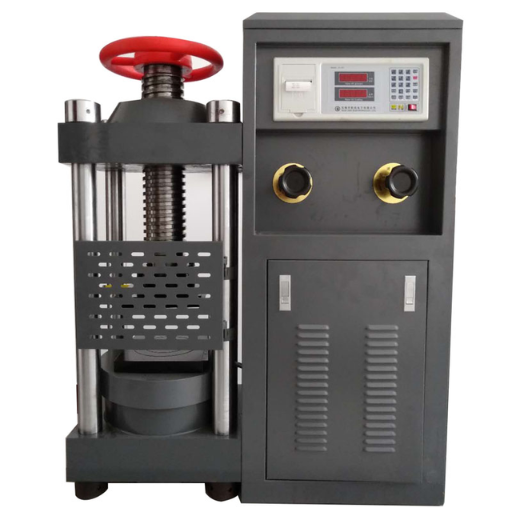
Like any other tool, a car engine is a complex machine that requires regular maintenance to ensure durability and functionality. Conducting compression measurements is one such method to evaluate the performance of an engine. An engine’s compression measurement helps in recognizing the pressure build up in the cylinders, in return providing valuable insights into areas such as damaged gaskets, leaky valves or lost piston rings. In order to have precision with measuring the compression, a compression gauge can be used whilst considering the following steps:
- Pre-Check the Engine: Ensure that the engine has reached its operating temperature, and turn off the ignition system and fuel injectors to avoid starting the engine.
- Spark Plug Check: Remove the spark plugs so that each cylinder has unhindered access for tests and pressure buildup is eliminated.
- Apply the Compression Gauge: The gauge should be tightened to the relevant spark plug hole of the cylinder being assessed.
- Engine Crank: For 5-10 seconds, the engine should be cranked using the starter motor at a constant speed.
- Get the Reading: Collect the readings indicated from the gauge and note down the peak pressure for every gauge read.
Once done with this, make sure that the results are checked against the manufacturer’s guidelines. Readings outside the manufacturer guidelines would indicate serious measurement issues, while large differences across cylinders would hint at mechanical faults requiring deep-dive inspections. Optimal performance relies on accurate readings maintained throughout, and checked periodically.
What is a good compression gauge reading?
It is ideal to have a good gauge reading fall within the range values of the manufacturer, which may differ from one engine type to another. Typically, for gasoline engines, the accepted compression reading is between 120 to 220 psi. In this case, consistency is key, too much variation, like 10-15% between the cylinders, is a problem which suggests worn piston rings, valve leakage, or sometimes even head gasket failure. Diesel engines have much higher compression ratios, thus there is greater range for the reading anywhere from 300 to 450 psi. For precision in diagnostics, the particular range values from the service manual of the engine should be referenced.
How to interpret compression test results?
Having the appropriate data for an engine should help in better analyzing the engine’s observed values and measurements to see if it needs servicing. A burned valve or head gasket leak could be the problem for low readings along with a damaged piston. While high readings could indicate carbon build up. By manufacturer suggestion and model, measurements from all cylinders should closely match compression for optimal performance.
Just as important is how fast pressure builds during the test. For example, consistently slow or patchy increases in pressure may indicate worn piston ring seals or a damaged cylinder wall. A wet compression test distinguishes between valve and piston seal problems by adding a small amount of oil to the spark plug hole prior to testing. If pressure increases significantly with the added oil, it often indicates problems with piston rings. If change is minimal, the problem is likely with the valves or the cylinder head. Always confirm cross reference your conclusions with the documentation to maintain proper accuracy in diagnosis.
What does low compression mean for your engine?
Low compression in an engine means there is a loss of necessary pressure in one or more cylinders. This can hurt the engine’s efficiency in combusting the air-fuel mixture. Some results of this may be reduced power output, rough idling, poor fuel economy, or even failing to start completely. Compression loss is usually caused by worn piston rings, damaged cylinder walls, leaking valves or a blown head gasket. With modern borescope inspections and cylinder leak-down tests, pinpointing the cause of loss compression is easier than it used to be. While it is possible to detect the root issues of low compression using modern-day techniques, addressing them without delay is critical to avoid any further engine wear, which eventually leads to more expensive repairs.
Common Issues Identified by Engine Compression Tests
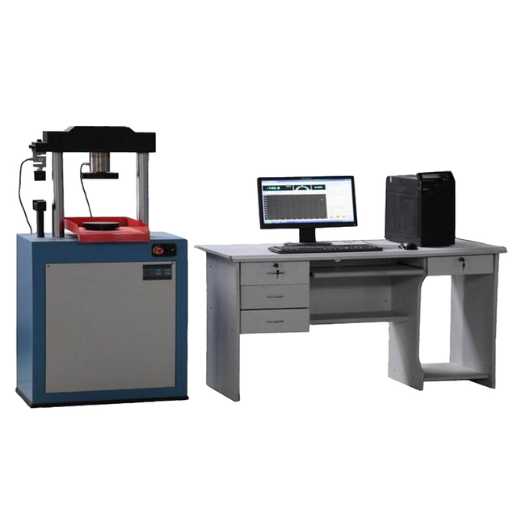
- Worn Piston Rings
Worn or damaged piston rings are issues that cause too much combustion gases to leak into the crankcase, resulting in a significant loss of compression. This directly decreases the engine’s performance while simultaneously increasing oil intake.
- Leaking Valves
Improper sealing valves can result in air-fuel mixtures or combustion gases escaping malfunctioning compression levels across cylinders. Leaking valves are usually a problem caused by the carbon deposits, burned valve seats, or general wear and tear.
- Blown Head Gasket
A blown head gasket can allow compression to escape between the cylinder head and the engine block. This often leads to the mixing (cross contamination) of oil and coolant, or physically manifests with white exhaust smoke.
- Cracked or Damaged Cylinder Walls
Damage to the cylinder walls from over heating, wear, or debris can also lead to a faulty seal which will result in over compression of the chamber.
- Timing Issues
Improperly set valve timing because of a worn or out of place timing chain/belt will frequently cause airflow obstacles as well to improper sealing in the combustion chamber leading to unevenly distributed compression.
Verifying these issues and diagnosing for deeper engine issues at regular intervals is crucial to engine longevity as parts might not be damaged yet in deeper levels but those won’t just happen overnight.
What are the signs of low compression?
Noteworthy symptoms of low compression in an engine include loss of power as well as poor acceleration which increasingly worsens if not fixed in time. One of the most visible symptoms is reduced performance of the engine, extreme sluggishness while accelerating, or struggling to maintain speed under a heavy load. Furthermore, rough idles and vibrations are experienced while the car is stationary which results in the engine firing inconsistently, often termed “misfiring,” particularly in the problematic cylinders.
Due to not having adequate compression, combustion efficiency falls, which means fuel burns less thoroughly, causing low grade compression to directly cause excessive fuel consumption. Oftentimes, drivers may notice abnormalities while trying to start the engine, for example, the engine may take longer to crank or, in worst case scenarios, the engine may be unable to start entirely. In addition to these issues, low compression may result in excessive exhaust smoke, and temperatures ranging anywhere from blue to white, which indicates incomplete combustion. Damage to the engine caused by worn piston rings and damaged valves could be identified, but it requires thorough investigation. By recognizing these symptoms early on, further damage to the engine and expensive repairs afterward can be avoided.
How can a compression test help diagnose engine problems?
The compression test is an important diagnostic procedure when evaluating the condition of the engine’s internal parts. It helps identify concerns like defective piston rings or a damaged cylinder wall by calculating the pressure created in every cylinder. A healthy engine will always show some cylinder compression measurement within a predetermined range set by the manufacturer with little to no difference between cylinders. Healthy engine compression values have consistent pressure across all cylinders, minimal variance, or balanced readings. Exceeding these values, such as significantly low readings, plus inconsistently high or low pressure across multiple cylinders are definitive sign of engine trouble that need to be solved. For instance, one or more low compressed cylinders could point to localized issues – Caused by bad valves, while universal low compression might indicate the presence of full blown problems, possibly due to timing belt misalignment. The compression test provides accurate data which helps the technician determine the real reason why the engine is not working optimally so that proper measures can be taken to fix it and avoid removing parts that are still functional.
Different Types of Compression Tests
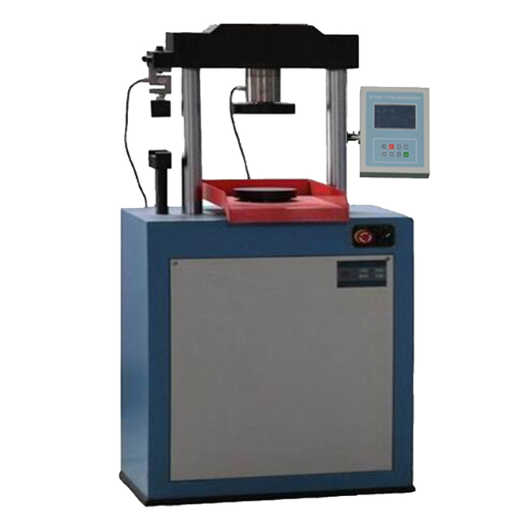
Compression tests can be categorized into two primary types:
- Dry Compression Test
The compression check is done without adding any oil into the cylinder. This procedure is the simplest. It establishes baseline compression and evaluates for any worn piston rings, head gaskets or valves.
- Wet Compression Test
In this test, a small amount of engine oil is added into the cylinder prior to measuring compression. The oil serves to enhance the temporary sealing gaps around the piston rings, enabling compression measurement to check low compression against worn rings versus other issues such as valves or head gaskets.
Using both tests, the mechanic has a clear distinction between ring, valve, and engine condition problems.
What are the different compression test methods?
|
Compression Test Method |
Description |
Key Parameters |
|---|---|---|
|
Dry Compression Test |
Measures compression without added oil |
Standard cylinder pressure level |
|
Wet Compression Test |
Adds oil to identify ring issues |
Pressure difference indication |
|
Cylinder Leak-Down Test |
Measures air leakage in cylinders |
Leak percentage, pressure loss |
|
Dynamic Compression Test |
Conducted while engine is running |
Real-time pressure fluctuation |
|
Peak Pressure Test |
Measures maximum cylinder pressure during cranking |
Peak pressure readings |
|
Digital Compression Test |
Uses electronic gauges for precision |
Digital pressure readings |
|
Multi-Cylinder Comparison Test |
Compare compression across all cylinders |
Cylindrical balance variation |
|
Bore Scope Inspection Test |
Inspects internal cylinder walls visually using a scope |
Visual wear or damage signs |
How does the ASTM standard affect testing?
The ASTM standard is essential in providing structure for uniformity, dependability, and accuracy in all tests conducted. For Comparison, these standards define rigorous procedures that need to be followed such as elimination of bias ensuring no subjectivity. ASTM typically achieves accuracy through the use of numerical biases, such as in visual assessment through the use of bore scope imaging designed to evaluate the wear and damage to surfaces. With ASTM standards in place, not only are rigorous procedures put in place which enhances the credibility of the methodologies employed, it also makes the diagnostic done much more accurate thus informing the decision made on the maintenance work and the systems on quality assurance.
Comparing compression test methods for various engines
|
Test Method |
Description |
Key Parameters |
Advantages |
Limitations |
|---|---|---|---|---|
|
Cylinder Leak-Down Test |
Measures cylinder leakage percentage |
Leakage rate (%), pressure input |
Precise leakage location |
Requires specialized equipment |
|
Wet Compression Test |
Evaluates cylinder compression with added oil |
Compression pressure, oil amount |
Identifies worn piston rings |
Less effective for valve issues |
|
Dry Compression Test |
Baseline assessment of cylinder compression |
Compression pressure (psi) |
Simple to perform, quick test |
Limited diagnostic insights |
|
Dynamic Compression Test |
Performed during engine operation |
Compression pressure under operation |
Real-time data analysis |
Requires skilled technician |
|
Cranking Compression Test |
Evaluates compression during engine cranking |
Cranking RPM, pressure readings |
Identifies serious compression issues |
Limited for mild faults |
|
Peak Pressure Test |
Records maximum engine cylinder pressure |
Peak pressure value |
Useful for performance tuning |
May not identify intermittent issues |
Practical Applications of Compression Testing in Materials Testing
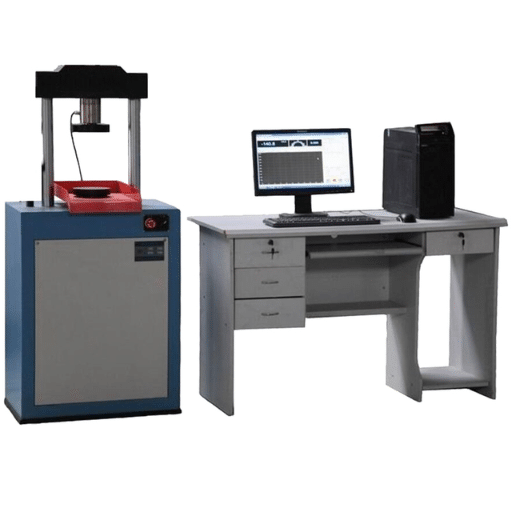
Compression testing is a kind of test that is performed widely in the construction industry, the primary goal is to analyze the material for any flaws and scrutinize its compressive strength. It is also used in applying pressure to a variety of other materials including metals, polymers and composites. The test aids engineers by providing information of the monitoring the strength of the material under load, structural stability and changes in shape during stress ration.
To illustrate, compression testing upholds safety standards in construction by verifying the concrete’s compressive strength before utilizing it in a building project. Likewise, in the foam, plastics, or other packaging materials industries, it is used on the compressive strength of company’s products to improve their design. This testing contributes to the reliability and safety of various fields. The accuracy and dependability of compression testing makes it vital in quality control as well as materials research.
How is compression testing used in materials testing?
Compression testing focuses on evaluating how a material reacts and its mechanical structure when subjected to compressive forces. It is used to measure compressive strength, the modulus of elasticity, and yield strength, which all help determine how a material will behave under loading conditions. Metals, polymers, ceramics, and composites are materials which undergo compression tests to determine if they are appropriate for certain uses. State-of-the-art compression testing machines with modern load cells and software automate the data collection procedures which, in turn, allows continuous monitoring of deformation patterns, strain rates, and even failure points which is immensely helpful for engineers and researchers. Moreover, compression testing is often the basis for standard compliance checks, for example, ASTM and ISO standards which dictate testing rigor and industrial and construction grade safety and quality assurance.
What are the benefits of using a test machine for compression tests?
Employing a test machine for conducting compression tests comes with a myriad of advantages, especially in terms of precision, trustworthiness, and regulation across different sectors. Following is a list of more particular benefits.
- High Precision and Accuracy
Contemporary testing machines come equipped with sophisticated sensors alongside load cells to capture exerted forces and displacement accurately. For example, the majority of universal testing machines function at a force resolution of 0.5% or better, which ensures accurate measurement of even the smallest material deformation changes.
- Real-Time Monitoring and Data Collection
Test machines come with integrated software that automatically captures load, displacement, and strain data. This enables engineers to visualize the stress-strain diagrams and also monitor critical parameters, including yield strength, ultimate strength, and modulus of elasticity in real-time during the test.
- Compliance with Industry Standards
The majority of test machines come factory-ready to adhere to ASTM standards E9 (Compression Testing of Metallic Materials) and ISO 604 (Plastics—Compression Properties of Test Specimens). This guarantees that uniformity, repeatability, and reliability are incorporated within the test procedures for the metric of confidence testing to ascertain certification and validation standards.
- Wide Load Ranges and Versatility
With a maximum parameter ranging from a few Newtons (soft materials) to several hundred kilonewtons (hard materials), test machines are suitable for polymers, metals and ceramics.
- Automated Operation and Efficiency
Several machines have an option for programmable test sequensus which minimizes manual work. The ability to control test parameters such as loading rate, dwell time, and unloading and cycle times boosts precision and repeatability.
In general, employing a test machine improves the dependability and automation of compression tests, yielding insightful information regarding the qualities of materials vital to mechanical and industrial engineering.
Reference Sources
-
Design of experiment and analysis of deformation for compression test of lattices using digital image correlation
This study discusses the factors required to design a compression test for lattices and uses digital image correlation for analysis. -
The importance of box compression testing in the packaging industry
This paper highlights the role of Box Compression Testing (BCT) in evaluating the strength and integrity of packaging materials. -
Undrained Triaxial Compression Testing of Sand-Low Plastic Silt Mixtures
This research presents consolidated undrained triaxial compression tests on sand-low plastic silt mixtures, exploring the effects of varying silt content. -
Study on dynamic compression characteristics of coal
This study examines how strain rate and gas pressure influence the plastic deformation stage in the dynamic stress-strain curve of gas-containing coal.
Frequently Asked Questions (FAQs)
Q: What is compression testing in relation to a car’s engine?
A: Compression testing is a method used to evaluate the compression strength of each cylinder in a gas engine. It helps identify potential issues within the engine by measuring the pressure produced in each cylinder during the standard test.
Q: How do I perform a standard test for compression strength?
A: To perform a standard test, you need to disable the ignition and remove the spark plug wires. After that, crank the engine to measure the compression of one cylinder at a time using a compression gauge.
Q: Why is it important to test each cylinder individually?
A: Testing each cylinder individually allows you to identify which specific cylinder may have lower compression strength, indicating potential problems such as worn piston rings or valves.
Q: What is the rule of thumb for acceptable compression readings?
A: A rule of thumb for acceptable compression readings is that each cylinder should ideally measure between 100 psi and 200 psi. Significant differences between cylinders can indicate issues that need to be addressed.
Q: Can I perform a compression test on a cold engine?
A: Yes, you can perform a compression test on a cold engine, but it’s generally recommended to warm the engine slightly for more accurate results. A cold engine may yield lower compression readings.
Q: What equipment do I need for a compression test?
A: You will need a compression gauge, which is used to measure the pressure in the cylinder, as well as tools to disable the ignition, remove the spark plug wires, and possibly a test fixture for easier access to the cylinders.
Q: What are the compressive properties being measured during the test?
A: The compressive properties being measured during the test relate to the amount of pressure each cylinder can generate when the engine is cranked. This helps assess the overall health of the engine’s components.
Q: What should I do if I find low compression in one cylinder?
A: If you find low compression in one cylinder, you may want to conduct further diagnostics to determine the underlying issue. Common actions include checking for leaks, inspecting the valves, and assessing the piston rings.
Q: Is there a standard test method for compressive properties I should follow?
A: Yes, there are established testing standards for compression tests, often referred to as the standard test method for compressive properties. Following these standards ensures accurate and reliable results.






